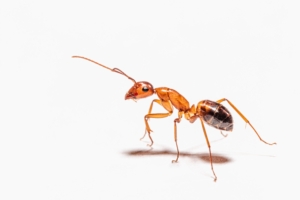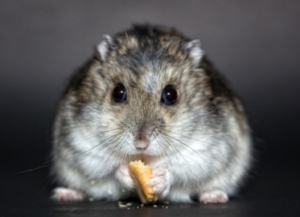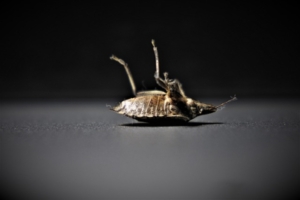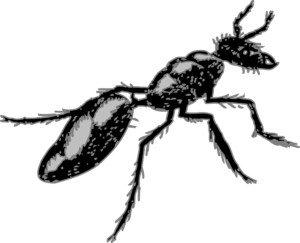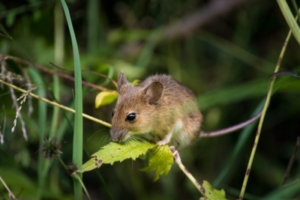Bug Blog
Carpenter Ants and why retail ant solutions don’t work
- Ants are highly adaptable: Ants are able to adapt to changing conditions quickly, and this includes adapting to new products or methods of pest control. This means that while retail purchased products may work initially, ants may eventually develop resistance to them and continue to thrive.
- Carpenter ants are difficult to control: Carpenter ants are notoriously difficult to control, and they often require professional-grade pesticides and specialized knowledge to effectively eliminate. Retail products may not have the strength or potency necessary to control a carpenter ant infestation.
- Retail products may not be targeted: Retail purchased products are often designed to be broad-spectrum, meaning that they are effective against a wide range of pests. However, this also means that they may not be specifically targeted at ants or carpenter ants, and may not be as effective at controlling these pests as products that are specifically designed for them.
In summary, retail purchased products can be effective at controlling many types of pests, but they may not always be the best choice for controlling ants, particularly carpenter ants. If you have an ant infestation, it is important to consult with us and we can recommend the most effective and appropriate treatment plan for your situation.
Carpenter Ants and The Dreaded Satellite Nest
The satellite nests are established by worker ants, which are responsible for locating suitable locations for new nests. Satellite nests are typically smaller than the primary nest and are usually located within a few hundred meters of the main colony.
Carpenter ant satellite nests are important for the survival of the colony, as they provide additional living space and allow the colony to expand its territory. Satellite nests also serve as a backup in case the primary nest is destroyed or becomes uninhabitable.
However, satellite nests can also be a problem for homeowners, as they can cause damage to wood structures in and around the home. If you suspect that you have a carpenter ant infestation, it is important to contact us at 778-886-4111 so we can identify the location of any satellite nests and develop an effective treatment plan.
Carpenter ants do not actually consume wood like termites do, but they can still cause significant damage to wooden structures. These ants excavate wood to create nesting galleries and tunnels, which they use to live in and rear their brood. Over time, this excavation can weaken the structural integrity of the wood, causing it to become hollow and brittle.
Carpenter ants are attracted to damp and decaying wood, so they often infest areas where there is moisture or water damage. They can enter a home through small cracks or openings, such as gaps in window frames or doorways, and then make their way into the wood structures.
Once they have established a colony, carpenter ants will continue to excavate wood to create more living space. This can cause significant damage to wooden structures, and in some cases, can even compromise the safety of a building.
What is this ” imidacloprid”
Imidacloprid is a systemic insecticide belonging to the neonicotinoid class of chemicals. It is widely used in agriculture, as well as in residential and commercial settings, to control a variety of insect pests, including aphids, whiteflies, termites, and fleas.
Imidacloprid works by binding to specific receptors in the nervous system of insects, causing paralysis and eventually death. It is absorbed by plants and can provide long-lasting protection against pests that feed on them. Imidacloprid is also used as a seed treatment, which can provide protection against pests from the early stages of plant growth.
Imidacloprid has been the subject of controversy due to its potential impact on non-target species, such as bees and other pollinators. There is evidence to suggest that imidacloprid can harm bees and other beneficial insects, and it has been banned or restricted in some countries for this reason.
As with any pesticide, it is important to use imidacloprid according to label directions and to follow best practices for pesticide use to minimize the risk of harm to humans, animals, and the environment.
Integrated Pest Management
 Integrated Pest Management (IPM) is a pest control strategy that uses a combination of techniques to manage pests in a way that is effective, economical, and environmentally sensitive. IPM is based on the principles of prevention, monitoring, and control.
Integrated Pest Management (IPM) is a pest control strategy that uses a combination of techniques to manage pests in a way that is effective, economical, and environmentally sensitive. IPM is based on the principles of prevention, monitoring, and control.
The goal of IPM is to minimize the use of pesticides and other chemicals, while still effectively managing pest populations. Some of the techniques used in IPM include:
- Cultural controls: This involves modifying the environment to make it less hospitable to pests, such as removing food and water sources, sealing cracks and crevices, and using landscaping practices that discourage pest infestations.
- Biological controls: This involves using natural predators, parasites, and pathogens to control pest populations. For example, introducing beneficial insects like ladybugs to control aphids on plants.
- Mechanical controls: This involves physically removing pests or preventing them from accessing an area, such as using screens or netting to keep pests out.
- Chemical controls: This involves the targeted use of pesticides or other chemicals to control pest populations. In IPM, chemical controls are used only as a last resort and are applied in a way that minimizes their impact on non-target species and the environment.
IPM programs are often used in agricultural settings, but can also be applied in homes, schools, and other settings where pest infestations are a problem. By using a combination of techniques and focusing on prevention and monitoring, IPM can effectively manage pest populations while reducing the use of harmful chemicals.
When looking for a pest control company, it is important to consider the following factors:
- Experience and reputation: Look for a company that has a proven track record of success in dealing with pest infestations. Check reviews and ratings from previous customers to get an idea of the company’s reputation.
- Licenses and certifications: Make sure the company has the necessary licenses and certifications to perform pest control services in your area. This ensures that they are following all applicable laws and regulations.
- Service offerings: Different pest control companies offer different services, so make sure the company you choose offers the specific services you need.
- Safety and environmental concerns: Ask the company about their policies on safety and the environment. Make sure they use products and methods that are safe for people, pets, and the environment.
- Customer service: Choose a company that offers excellent customer service and is responsive to your questions and concerns.
By considering these factors, you can find a pest control company that will effectively address your pest problem while providing you with peace of mind.
What You Need To Do “Preparing for an ant spray”
- Identify the type of ant: Different types of ants may require different types of ant spray or treatment methods. Make sure you know what type of ant you are dealing with or take pictures and send them to us.
- Remove food and water sources: Ants are attracted to food and water, so it is important to remove any sources of food and water that might be attracting them. Clean up spills, empty garbage cans regularly, and store food in sealed containers.
- Clean the area: Clean the area where you plan to have sprayed, remove any debris or crumbs that might interfere with the effectiveness of the spray.
- Cover or remove items: Cover or remove any items in the area that might be in the way before the ants are sprayed.
- Keep children and pets away: Ant sprays can be harmful to children and pets, so make sure to keep them away from the area while its being applied, until it has dried completely or the 6 hour wait period.
- Ventilate the area: Ant sprays can produce fumes, so make sure to ventilate the area by opening windows or turning on fans.
How do you control rat populations
There are several methods that can be used to control rat populations, including:
Professional pest control: If you’re having trouble controlling a rat infestation on your own, it may be necessary to hire a professional pest control company. They will have the knowledge and equipment to effectively control the rat population and prevent future infestations.
Rodenticides: These are chemicals that are designed to kill rats. They can be in the form of pellets or blocks that are placed in areas where rats are likely to travel. However, it’s important to use caution when using rodenticides, as they can also be harmful to pets and other animals if ingested.
Exclusion: This involves sealing off any entry points that rats might be using to get into your property. This can be done by using materials such as wire mesh, caulk, or foam insulation to seal any gaps or holes in walls, floors, or roofs.
Sanitation: Rats are attracted to food and garbage, so it’s important to keep your property clean and free of any potential food sources. This can include properly storing food in sealed containers, regularly taking out the garbage, and keeping outdoor areas clean and free of debris.
Traps: This is one of the most common methods of controlling rats. There are several types of traps available, including snap traps, glue traps, and live traps. Snap traps are typically the most effective, as they quickly kill the rat, but live traps can also be effective if the rats are released far away from your property.
Rats and Mice – Keeping them out.

Seal all openings that are bigger than ¼ in.
A mixture of steel wool and caulking may be used
for smaller holes. Regularly inspect and repair entry points by
covering with heavy gauge screening or 5 mm
hardware cloth or metal mesh, ideally woven and
galvanized to prevent edges from being gnawed
and to prevent rust. Use elastomeric sealants to seal long gaps, such as
those between walls and floors. Seal gaps anywhere pipes meet walls with
escutcheon plates, securing to the wall with screws
or sealant. Install sheet metal kick plates on door exteriors. Consider industrial door sweeps designed for exclusion (not just weather stripping).
Build outbuildings like sheds on concrete pads,
not bare ground. Native plants like wild mint are used by some
Indigenous peoples to discourage rodents. Prune back branches at least 2 meters from
balconies, eaves and roofs. Inspect and seal all structural lines that connect with
or enter buildings at any level, such as utility lines
and vents, pipes, electrical lines, sewer lines and
drains, cable lines, dryer vents and exhaust vents. Consider hiring a professional to identify problem areas and design a long-term IPM strategy.
Gaps under doors may allow rodent entry.
Inspect and repair any holes or gaps around your home that may create
rodent entry points.
Mice can gain access through a dime sized opening, while rats only need a
quarter-sized hole
Bed Bug Service Preparation Steps
Be prepared to leave the home during treatment and for 6 hours afterward.
Remove all pets from the home during the time of treatment except for fish tanks. Fish tanks are to be covered with plastic wrap, and pumps turned off until you are allowed to reoccupy the home.
Remove all sheets, covers, dust ruffles, or any other bedding covers from the mattresses and box spring in all bedrooms. Wash all bed linens in the hottest water possible. Do not replace the bed linens until six hours after treatment.
If any mattresses, box springs, or other furniture are in poor or ripped condition and infested, they should be placed in large plastic storage bags (available from moving or storage stores), then removed from your home and discarded.
Remove all personal items including clothes, toys, shoes, stored materials, etc., from the furniture and floor area throughout the home.
Remove everything from all closets. Completely empty all bedroom drawers and empty all books and items from bookcases prior to treatment.
Clean or launder all clothing in the hottest water possible and store in clean storage bags for up to two weeks after treatment. Any stuffed toys or other fabric-based personal items should be run through a pre-heated, hot dryer cycle for at least 15 minutes.
Vacuum all carpeting, bedding, bed frames, backs of pictures, and other areas where bedbugs have been seen. Immediately empty the vacuum cleaner bag and dispose of it in an exterior dumpster or trash.
To give the treatment time to work, do not shampoo or clean floors or carpet for at least three weeks after the treatment. The vacuum should be used regularly.
Move all items and furniture away from walls, access is required for all baseboards and behind all furniture. (Everything may be returned to its original location after the treatment is completed.)
The bathtub, kitchen counters, dining room tables, and coffee tables can be used to place items during treatment.
Tips to Get Rid of Ants
Ants are showing up all over, invading homes and gardens and annoying people who see them crawling everywhere. “They’re looking for sweets; they’re looking for carbohydrates, they’re looking for crumbs. Anything they can take back to their nest and store it for the winter time.” explained Randy Bilesky of Go Green Pest Control in Delta B.C.
Bilesky says he’s been staying busy with calls from customers who want to get rid of ants. He says spraying around foundations outside– and baseboards inside can get rid of the pests. It’s important to locate the nest. “To find the nest, feed the ants and follow the ants,” Bilesky said. Sugar will attract the ants, and then people can see where they go and take steps to get rid of them. Finding the nest lets you target the entire colony, which can contain hundreds of thousands of ants. You can also buy ant baits at the store or use recipes from the internet that utilize ingredients available at home such as borax, sugar and warm water. Recipes recommend that you dip a cotton ball in the mixture and put it in the path of the ants.
Remember to keep ant bait away from children and pets. Go
Rodents and their Health Risks
Oh those rats and mice and other furry creatures can give you all kinds of nasty issues:
Hantavirus Pulmonary Syndrome is a serious illness caused by a virus that may be
transmitted by rodents. The virus is only found in one type of wild mouse – the deer
mouse – that can spread the virus in their urine, droppings or saliva. House mice, Norway rats and roof rats are not known to transmit the virus. People can be infected when they breathe in contaminated air or, rarely, if they bitten by a deer mouse with the virus. To protect yourself, avoid contact with deer mice and take extra care if living, working, or playing in areas near deer mouse habitats. If cleaning up rodent infestations that may be deer mice, additional precautions should be taken to avoid potential exposure.
Randy Bilesky BSF RPF CPA 778-886-4111 GoGreenPestControl.ca@gmail.com


